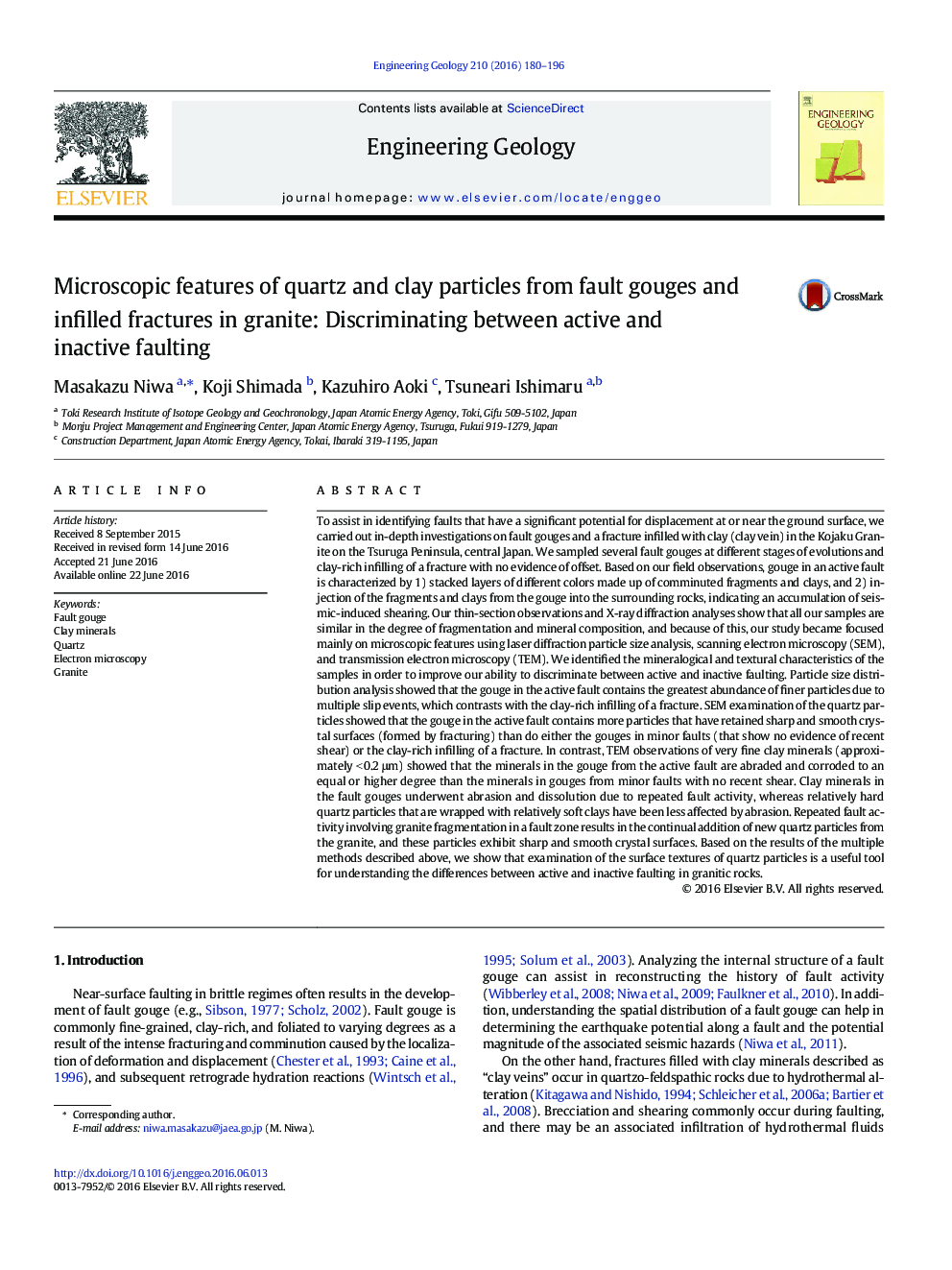| کد مقاله | کد نشریه | سال انتشار | مقاله انگلیسی | نسخه تمام متن |
|---|---|---|---|---|
| 4743031 | 1641775 | 2016 | 17 صفحه PDF | دانلود رایگان |
• Fault gouge in an active fault was compared to clay infillings of fractures.
• Particle size distribution shows accumulation of shearing in the gouge.
• SEM observation of quartz surfaces shows continuous brecciation in the gouge.
• TEM observation shows abrasion of clay minerals due to the shearing.
• Examination of quartz particles is a promising method to identify capable faults.
To assist in identifying faults that have a significant potential for displacement at or near the ground surface, we carried out in-depth investigations on fault gouges and a fracture infilled with clay (clay vein) in the Kojaku Granite on the Tsuruga Peninsula, central Japan. We sampled several fault gouges at different stages of evolutions and clay-rich infilling of a fracture with no evidence of offset. Based on our field observations, gouge in an active fault is characterized by 1) stacked layers of different colors made up of comminuted fragments and clays, and 2) injection of the fragments and clays from the gouge into the surrounding rocks, indicating an accumulation of seismic-induced shearing. Our thin-section observations and X-ray diffraction analyses show that all our samples are similar in the degree of fragmentation and mineral composition, and because of this, our study became focused mainly on microscopic features using laser diffraction particle size analysis, scanning electron microscopy (SEM), and transmission electron microscopy (TEM). We identified the mineralogical and textural characteristics of the samples in order to improve our ability to discriminate between active and inactive faulting. Particle size distribution analysis showed that the gouge in the active fault contains the greatest abundance of finer particles due to multiple slip events, which contrasts with the clay-rich infilling of a fracture. SEM examination of the quartz particles showed that the gouge in the active fault contains more particles that have retained sharp and smooth crystal surfaces (formed by fracturing) than do either the gouges in minor faults (that show no evidence of recent shear) or the clay-rich infilling of a fracture. In contrast, TEM observations of very fine clay minerals (approximately < 0.2 μm) showed that the minerals in the gouge from the active fault are abraded and corroded to an equal or higher degree than the minerals in gouges from minor faults with no recent shear. Clay minerals in the fault gouges underwent abrasion and dissolution due to repeated fault activity, whereas relatively hard quartz particles that are wrapped with relatively soft clays have been less affected by abrasion. Repeated fault activity involving granite fragmentation in a fault zone results in the continual addition of new quartz particles from the granite, and these particles exhibit sharp and smooth crystal surfaces. Based on the results of the multiple methods described above, we show that examination of the surface textures of quartz particles is a useful tool for understanding the differences between active and inactive faulting in granitic rocks.
Journal: Engineering Geology - Volume 210, 5 August 2016, Pages 180–196
